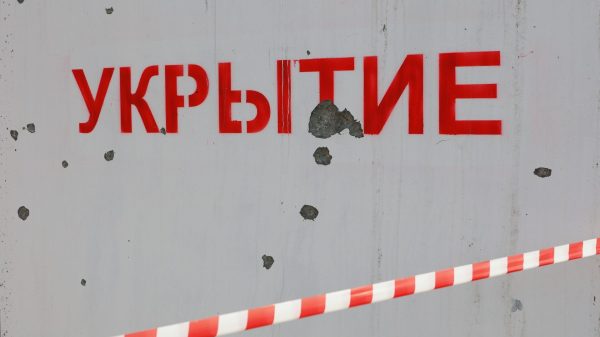 A police officer inspects a landslide in Baguio City, northern Philippines. Photo: AP Photo
A police officer inspects a landslide in Baguio City, northern Philippines. Photo: AP Photo
«Our cities on the north coast are under shelling,» said Manuel Mamba, governor of the northern province of Cagayan.
—I'm getting reports that the tin roofs have been blown away and the floods can't be diverted, probably because of the tides from the sea.»
2707 Chinese typhoon
According to the National Emergency Management Agency, at least one person drowned in the storm, but the full extent of its devastation will not be clear until it passes.
At least four entire cities have lost power due to the onslaught and six bridges were impassable due to flooding, Cagayan officials said in an initial damage report.
>Coast Guardsmen attempt to remove a fallen tree from the middle of a road in Claveria, Cagayan Province. Photo: Typhoon Doksuri at their home in Bacarra, Ilocos Norte province. Photo: Philippine Coast Guard via AP. A nearly 600-mile-wide storm is set to hit southeast China later this week. It will be the second typhoon to hit the country in two weeks, after Typhoon Talim hit Guangdong on July 17.
The government has declared the highest alert level for Doksuri, stopping trains and urging fishing boats to return to shore before the storm arrives.< /p>
While not ready for a direct hit, the typhoon's outer bands brought heavy rain and strong winds to the east coast of Taiwan on Wednesday.
 A farmer leads his buffalo to safety as the wind starts to pick up Isabela Province, north of Manila. Credit: STR/AFP via Getty Images
A farmer leads his buffalo to safety as the wind starts to pick up Isabela Province, north of Manila. Credit: STR/AFP via Getty Images
The island canceled ferry, flight and rail services in preparation for the hurricane.
Officials also canceled planned military exercises at an airport in the southeast, although separate exercises took place at Taiwan Taoyuan International Airport in the north. — this is the first time such an exercise has been conducted.
Officials briefly stopped commercial traffic so that soldiers could simulate defending the facility from a Chinese attack.
Typhoon Doksuri hit like a new United Nations strike The report warns of that countries in the Asia-Pacific region need to dramatically increase their investment in disaster warning systems to prepare for the risks associated with climate change.
Global warming poses a greater threat to the region, report says than previously documented. The annual loss could be worth up to $1 trillion if global temperatures rise 2°C above pre-industrial levels.
Protect yourself and your family by learning more about Global Health Security























































Свежие комментарии